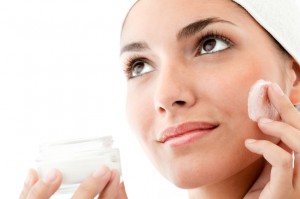
FRIDAY, Nov. 4 (HealthDay News) — Skimpy eyelashes, balding pates and wrinkles aren’t diseases, but they may as well be in a society that “medicalizes” normal conditions by producing drugs not to cure or heal, but to enhance, some health experts contend.
So the news that a cosmetic company is developing a pill to prevent hair from graying will offer Americans more options than ever to not only turn back the clock, but — as experts note — to eliminate common differences that make individuals distinct.
The booming worldwide “lifestyle” drug market — which was estimated to surpass $29 billion in 2007 — pits problems of a social or cosmetic nature against conditions threatening physical health or well-being. But all drugs in the United States must undergo the same rigorous approval process whether they are designated for disease prevention or treatment or to alter people’s looks or behavior. This distinction causes some to question if vanity should assume equal importance pharmaceutically to what some consider more authentic medical conditions.
“The debate is often framed here between treatment and enhancement,” said Dr. Joel Lexchin, a professor of health policy and management at York University in Toronto. “They’re taking what is traditionally considered normal human variation and trying to homogenize the way people look. On an individual level, people can do probably whatever they want, but on a collective level, we have to think about whether producing drugs that enhance people is really the best use of our resources.”
The anti-gray hair pill under development would join several other prescription-strength pills, potions or injections in the past two decades that concentrate solely on “fixing” conditions that — depending on perspective — can be perceived as a bane or simply a nuisance.
Propecia (finasteride), which began as a stronger-dose drug to treat enlarged prostates, has been prescribed to treat men with male pattern hair loss since 1997; Botox — botulinum toxin — first used to calm spastic eye muscles, was approved to treat frown lines in 2002; and Latisse, initially used to treat glaucoma in the 1990s, became available in 2009 for cosmetic purposes after patients noticed they were also growing longer, thicker eyelashes.
The U.S. Food and Drug Administration evaluated all of them in an identical manner to drugs for conditions such as cancer and heart disease, which is why the agency refuses to classify them as lifestyle drugs, agency spokeswoman Sandy Walsh said.
“The FDA does not have a special category for ‘cosmetic’ or ‘lifestyle’ prescription drugs,” Walsh said. “Rather, each prescription drug is evaluated based on scientific data and clinical trials under the FDA’s new drug application process.”
Under the U.S. Federal Food, Drug and Cosmetic Act, a medication must meet the statutory definition of a drug, which is determined in part, Walsh said, by its intended use. Drugs are defined as “articles intended for use in the diagnosis, cure, mitigation, treatment or prevention of disease,” she said, and “articles (other than food) intended to affect the structure or any function of the body of man or other animals.”
Complicating matters is that few drugs — even those used for cosmetic advantages — are without side effects, some of which are potentially dangerous. Because it alters pigmentation, L’Oreal’s new anti-gray hair pill could be a problem if it affected body moles, making them harder to diagnose as possible melanomas, according to recent reports on ABC News.
Effects of certain lifestyle drugs might even prove permanent or dangerous for some. Propecia and drugs in its class may contribute to irreversible sexual dysfunction or raise the risk of developing an aggressive form of prostate cancer, prompting the FDA to issue a safety alert in June, although the agency said the risk appears to be low. Latisse may darken the skin on the eyelid or permanently change the color of the iris, while Botox may deaden real emotions while robbing the face of its ability to show them, according to a 2010 study.
“So often, the answers are not known about the true side effects. If something changes the color of the irises, what else might it be doing that’s not so visible?” said Stacy Malkan, co-founder of Campaign for Safe Cosmetics, a nonprofit coalition to eliminate unsafe chemicals from cosmetics and other personal care products. “This just seems like a new frontier … of incomplete research.”
Leonore Tiefer, a clinical associate professor of psychiatry at NYU Langone Medical Center, said a “slippery, blurry border” between the social and medical dimensions of health makes it nearly impossible to define what constitutes a medical condition anymore.
“It’s just not so clear about what’s a disorder, a dysfunction, a disability,” said Tiefer, whose research on so-called “female sexual dysfunction” has challenged the medicalization of common sexual behaviors and functioning. “Throughout history, the boundaries have moved around. Medicine proceeds in ways that perhaps are not so obvious, and drug development does, too. How do you know something is a medical condition at all, unless it leads to immediate death? You add on these considerations that seem to nail it down, but it turns out they don’t really nail it down.”
More information
Learn more about lifestyle drugs from Johns Hopkins Medicine.

